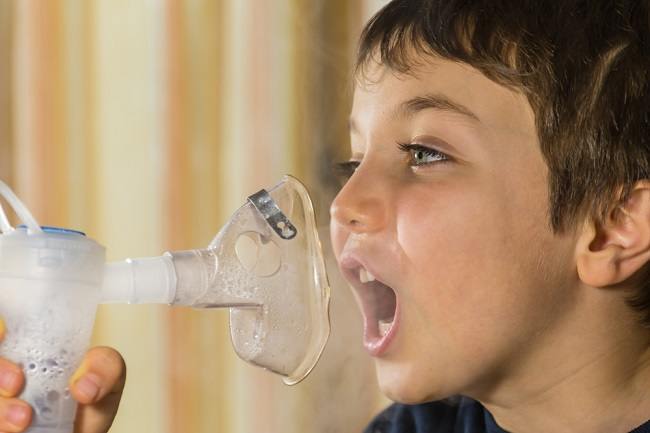Syphilis screening is a test to detect existence the antibodies producedthe body to fight the bacteria that causes syphilis. Sometimes, syphilis screening can also be done by directly looking for the presence of the bacteria that causes syphilis.
Syphilis is a type of sexually transmitted infection caused by bacteria Treponema pallidum (T. pallidum). This bacterium causes infection if it enters the body through an open wound in the skin or through the genitals. Syphilis is most often transmitted through sexual intercourse, but transmission can also occur from pregnant women to the fetus.

Syphilis screening is important because this disease can survive in the body for a long time, without causing symptoms. If left untreated, syphilis can cause blindness, paralysis, and even death. In pregnant women, syphilis has a high risk of causing death in the baby.
Syphilis screening can help doctors diagnose syphilis, especially in its early stages. That way, the patient will be easier to treat and complications of syphilis can also be avoided.
Syphilis Screening Indications
Syphilis can be transmitted through sexual contact. Therefore, doctors recommend screening for syphilis in the following groups of individuals:
- Prostitute
- HIV sufferers who are still sexually active
- Spouse of syphilis sufferer
- People who frequently change partners in sexual intercourse and do not use condoms
- Men who have sex with men
Because it can be fatal to the baby, all pregnant women are advised to undergo syphilis screening. Screening is recommended at the time of first pregnancy control. If pregnant women are at high risk for syphilis, screening is repeated in the third trimester and before delivery.
Types of Syphilis Screening
Syphilis screening can be done by serological tests, which are tests to detect antibodies that appear in the body's response to the bacteria that cause syphilis, or by direct detection of the bacteria. T. pallidum itself.
Serology test
Serology tests are performed by examining blood or cerebrospinal fluid (brain and spinal fluid). Serological tests for syphilis consist of a nontreponemal test and a treponemal test which both need to be done together. Here is the explanation:
1. Nontreponemal test
The nontreponemal test aims to detect nontreponemal antibodies that are not specifically associated with bacteria T. pallidum. These antibodies are called non-specific because they are not only produced when the body is infected with syphilis, but also when the body is exposed to other infections, such as Lyme disease, malaria, or tuberculosis.
Nontreponemal tests are divided into two types, namely:
- Rapid plasma reagin (RPR) test
- Venergy disease research laboratory (VDRL) test
This test is very sensitive to see the presence or absence of nontreponemal antibodies. However, due to its non-specific nature, a positive nontreponemal test result does not necessarily mean the patient has syphilis. Therefore, a nontreponemal test should be followed by a treponemal test to confirm the diagnosis.
The nontreponemal test is also used to determine whether the infection is still active or has not been treated. This is because nontreponemal antibodies will disappear from the body, approximately within 3 years, after the infection is treated appropriately.
2. Treponemal test
The treponemal test aims to detect treponemal antibodies that are specifically there to fight bacteria T. pallidum. Once produced, these treponemal antibodies will always be present in the body even though the patient has recovered from syphilis. That is, a positive result does not necessarily mean there is an active syphilis infection.
Therefore, a nontreponemal test is needed to confirm whether the patient's infection is an active infection or a past infection that was successfully cured.
Types of treponemal tests include:
- FTA-ABS (ffluorescent treponemal antibody absorption)
- TP-PA (treponema pallidumparticle agglutination assay)
- MHA-TP (microhemagglutination assay)
- HE (immunoassays)
Direct detection of bacteria T. pallidum
In addition to detecting antibodies, syphilis screening can also be done by detecting the presence of bacteria T. pallidum itself. This test is divided into two, namely:
- Darkfield microscopy, namely by dredging the syphilis wound to be examined under a special microscope
- Molecular test or PCR (polymerase chain reaction), namely by detecting the genetic material of T. pallidum on samples from the patient's wounds, blood, or cerebrospinal fluid
Syphilis Screening Warning
Syphilis screening results are not always accurate. Therefore, the implementation of one syphilis screening must be followed by another syphilis screening, to strengthen the diagnosis. In other words, a nontreponemal test must be followed by a treponemal test, and vice versa. In addition, the interpretation of the screening results must also be carried out by a doctor.
Inaccurate screening results can be affected by the following conditions:
- Injecting drug use
- Pregnancy
- Malaria
- Lyme disease
- Pneumonia
- Tuberculosis
- Lupus
Syphilis Screening Preparation and Procedure
Syphilis screening does not require any special preparation, such as fasting. However, before undergoing the test, the patient should tell the doctor about the drugs that are being taken. Patients also need to provide a history of disease that has been or is being experienced, especially if the disease can affect the accuracy of the syphilis screening results.
In syphilis screening that uses a blood sample, the doctor will take a sample of the patient's blood through a vein. Here are the steps the doctor does:
- Ask the patient to sit or lie down in the examination room
- Attach an elastic strap on the patient's upper arm, so that the blood in the veins is blocked
- Clean the area of the skin that will be pierced with an antiseptic solution or alcohol, then insert the needle into the vein in the inner fold of the elbow
- Take as many samples of the patient's blood as needed, then remove the strap, remove the needle, and apply pressure to the cotton swab and apply a bandage to the puncture site to prevent bleeding.
- Bring the blood sample that has been taken to the laboratory for further examination
While the syphilis screening using a sample of cerebrospinal fluid, the doctor will do it in the following steps:
- Ask the patient to lie on the examination table in a sideways position, with the knees tightly wrapped and the chin close to the chest
- Clean the patient's back and inject anesthetic into the lower spine
- Inserting a syringe into the spinal gap
- Taking a sample of 1–10 milliliters of cerebrospinal fluid in 4 tubes
- Remove the needle, then clean the injection site and cover it with a bandage
After Syphilis Screening
The doctor will notify the patient's syphilis screening results in 3-5 days. From the screening results, the conclusions that can be drawn are:
- The patient is suffering from active syphilis and needs treatment
- The patient has been infected with syphilis and has recovered
- The patient does not have syphilis at all
If the patient requires treatment, the doctor will give antibiotics according to the stage of syphilis disease and the patient's condition. If the patient has recovered or does not suffer from syphilis, the doctor will advise the patient to take steps to prevent syphilis and other sexually transmitted infections.
Syphilis Screening Side Effects
Syphilis screening is generally safe to do. The patient may feel a little pain during the blood collection process, but this effect is only temporary. In some cases, other risks that may occur due to syphilis screening are:
- Infection
- Dizziness or feeling like passing out
- Bleeding
- Hematoma or abnormal collection of blood outside the blood vessels









